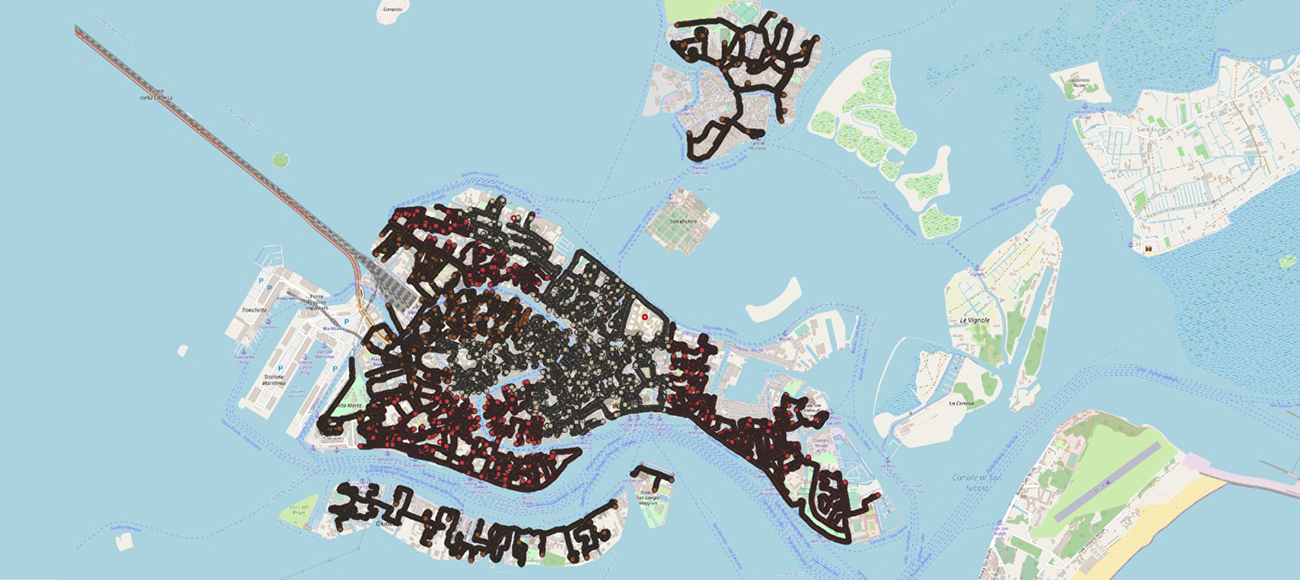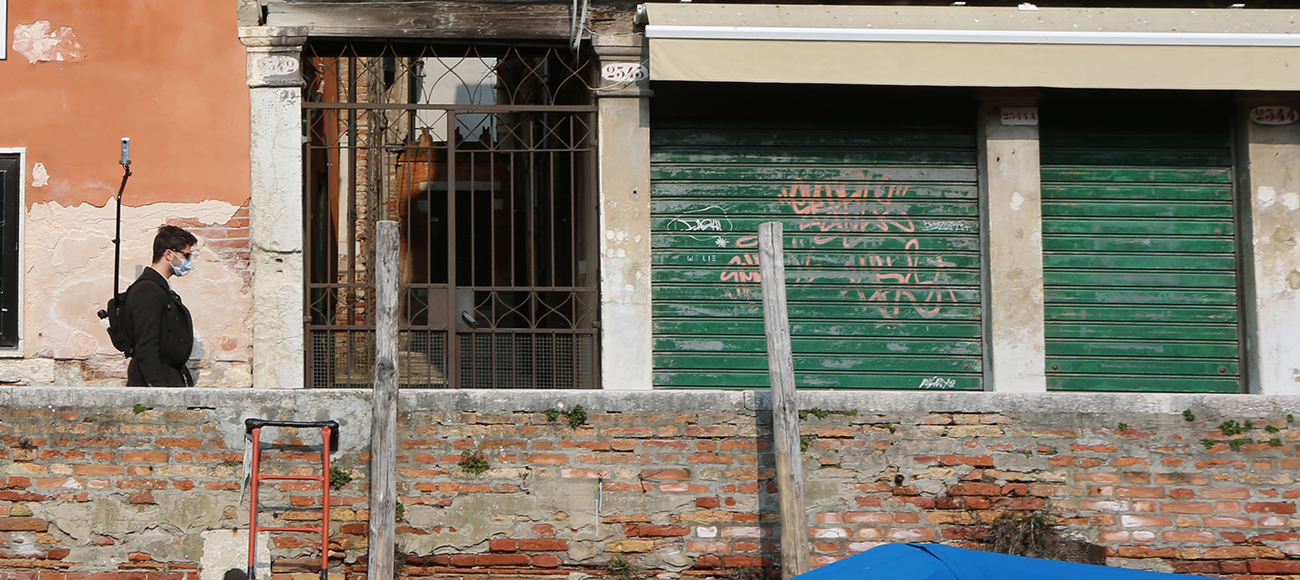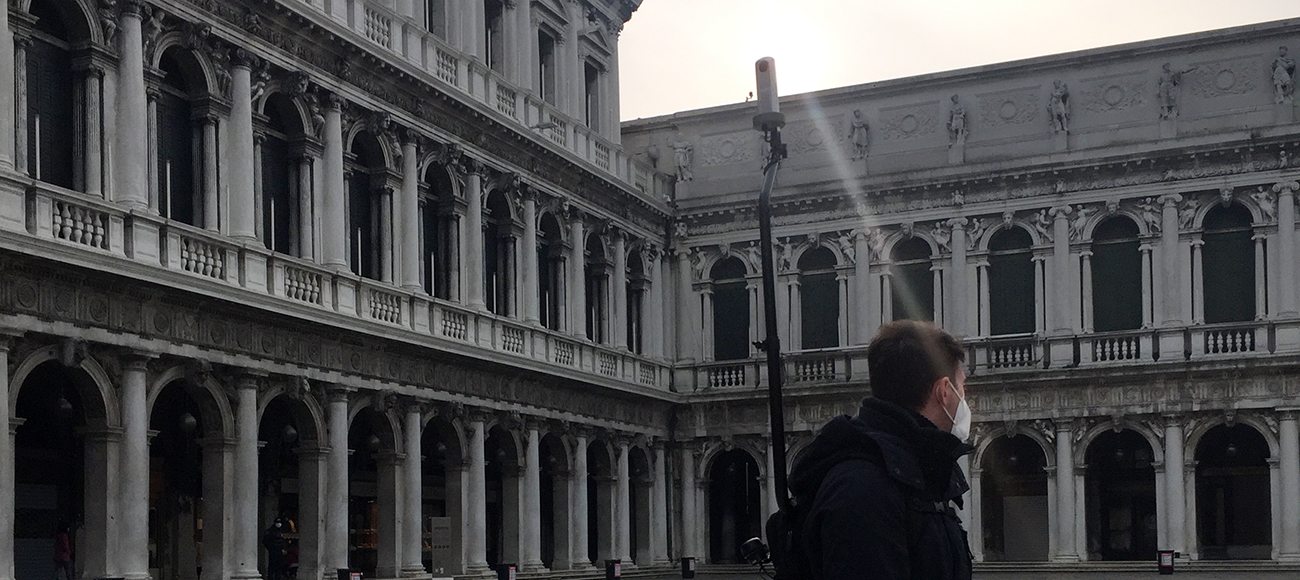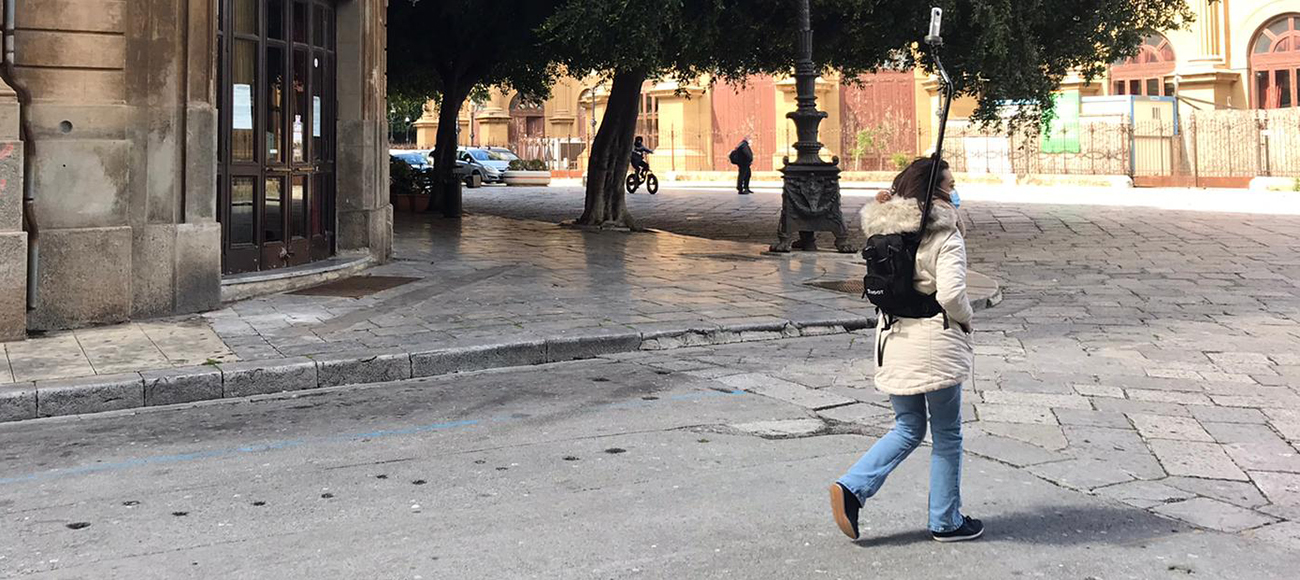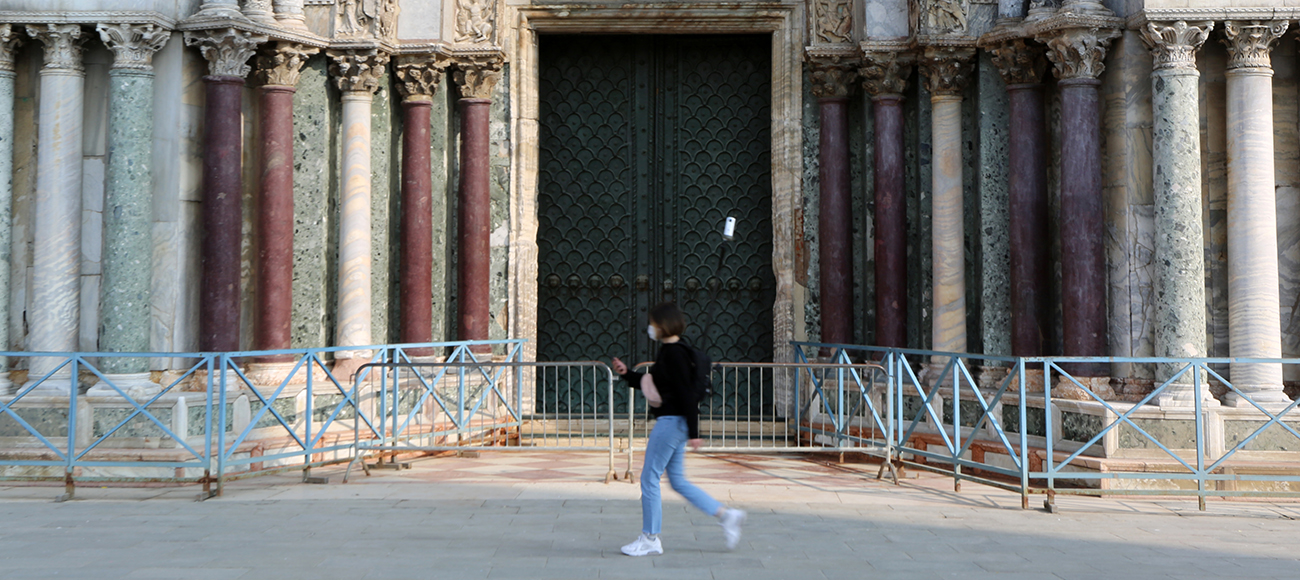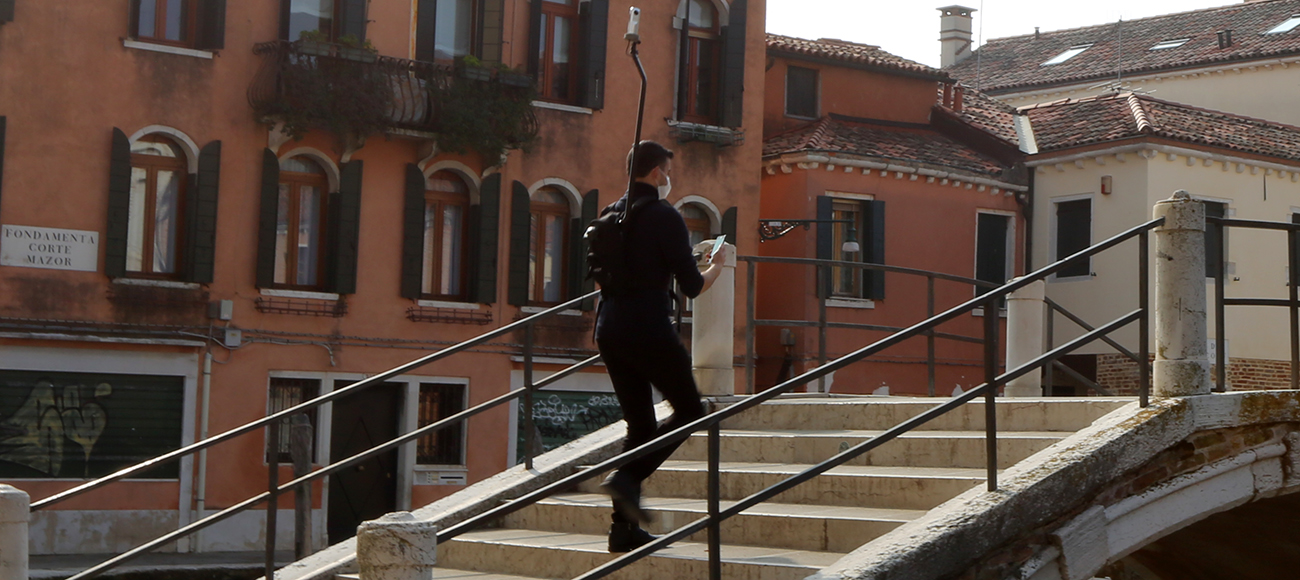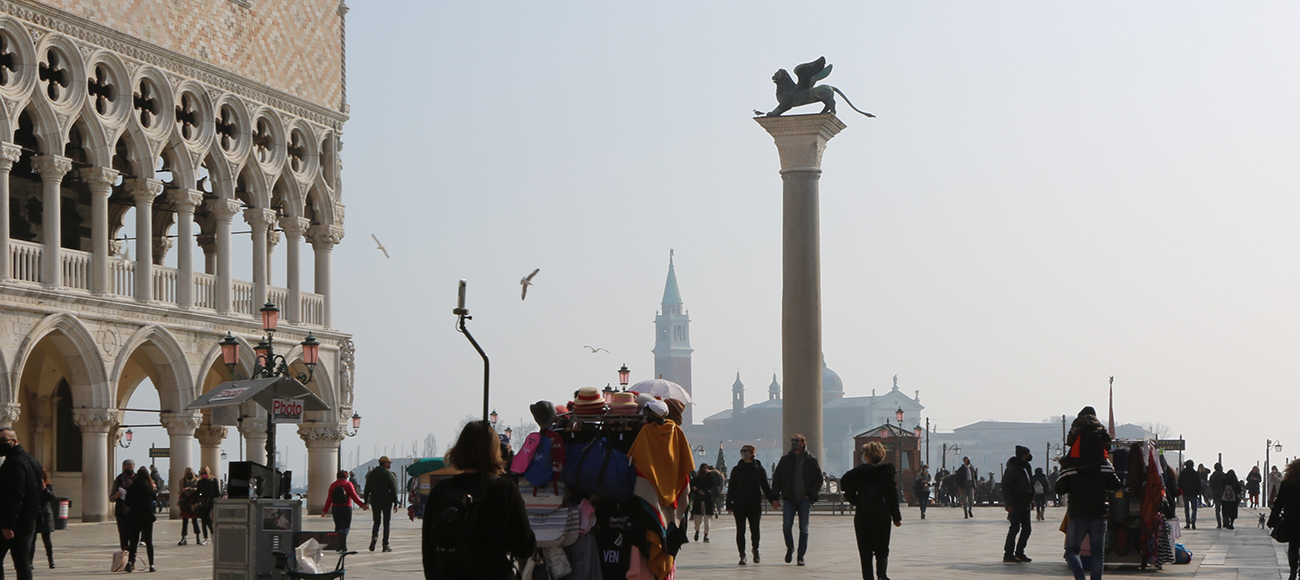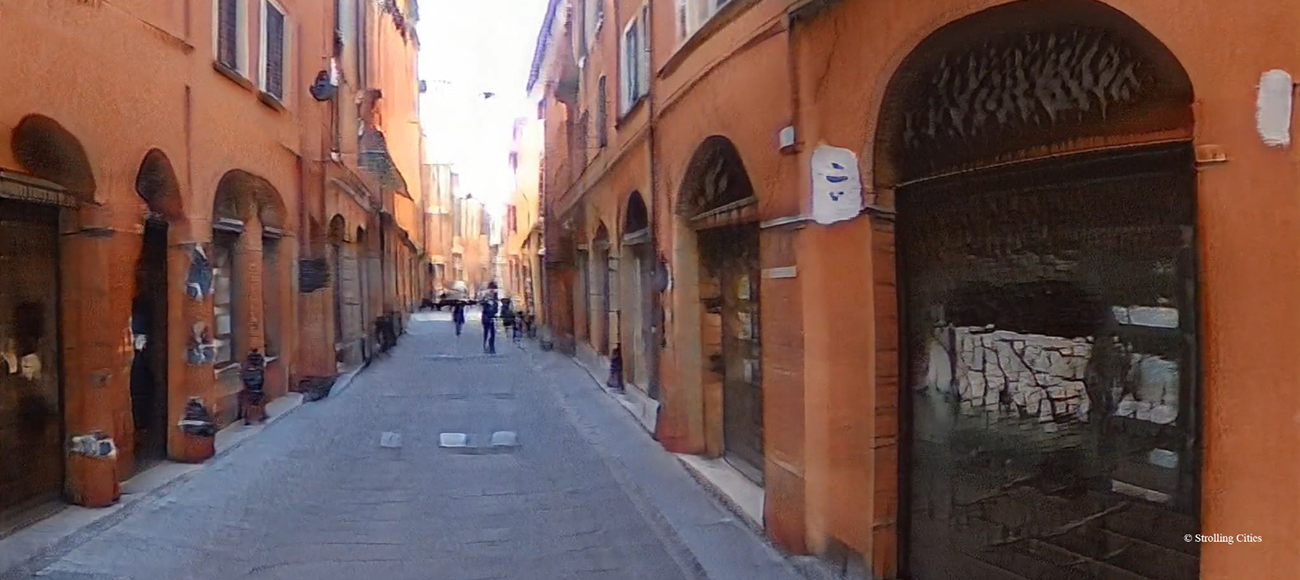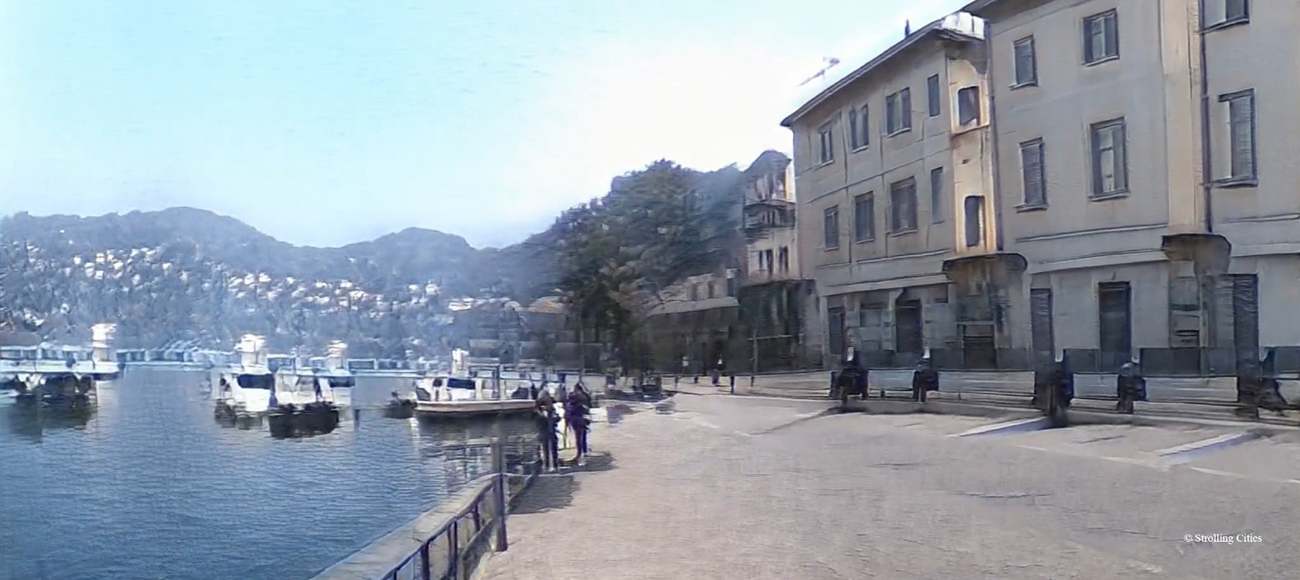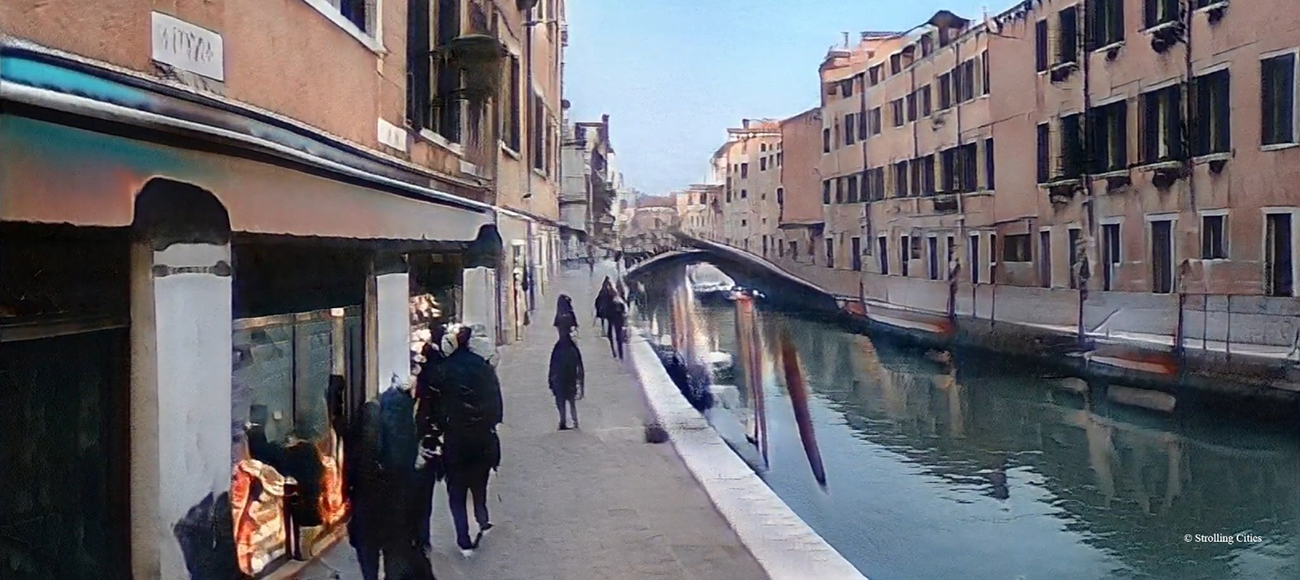Strolling cities is a project developed in collaboration with MIT-IBM Watson AI Lab, MindEarth, and Material Balance research group. It is presented as a video installation at the 17th International Architecture Biennale di Venezia.
Strolling Cities unveils the naked, materially seductive form of 9 Italian cities – Milan, Como, Bergamo, Venice, Bologna, Genoa, Rome, Catania, Palermo – by means of millions of photos taken by the students of Politecnico di Milano, AUIC School as a part of the workshop during the recent lockdowns (’20/’21) that show the urban space as an unfiltered landscape of walls, streets, and buildings. Returned to the immanence of their materiality, cities abandon their stereotyped semantic contents to embrace a new dimension of extreme elusiveness. A generative A.I. model trained with these images creates perpetually moving video-paintings, whose indefinite contours suggest a potential transformation of urban places, once ascribed to specific social functions, into open spaces available to countless (re)writings. The observer strolls while standing still, and the city changes in front, generating a unique cognitive experience, questioning and re-imagining the space at once.



